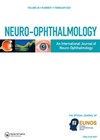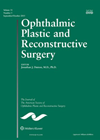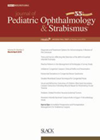
Journal Reviews archive for 2021
A novel way to distinguish between types of anterior ischaemic optic neuropathy
The authors evaluate the monocyte to high-density lipoprotein (HDL) ratio (MHR) in patients with arteritic and non arteritic anterior ischaemic optic neuropathy (A-AION / NA-AION). A distinction between the two types of AION is essential to begin appropriate treatment, which...
Migraine attack: does retinal and peripapillary blood flow change?
This prospective clinical study compared retinal and peripapillary blood flow parameters in migraine patients during an attack with healthy controls using optical coherence tomography angiography (OCTA). OCTAs were performed on 52 eyes from 26 migraine sufferers and 48 eyes from...
Quality of life after oculoplastic surgery
This is a literature review of published quality of life surveys in patients who have undergone a variety of oculoplastic procedures. The authors emphasise the importance of patient reported outcomes, noting that clinician and patient perceptions may differ, and that...
Topical steroids and ptosis surgery
This is a retrospective review examining the effect of prior topical steroid use on patients undergoing ptosis surgery. Out of a total of 406 eyelids undergoing ptosis repairs, 44 had received topical steroids for an average of 3.7 years prior...
Early refractive correction promotes esotropia control
This study sought to determine the incidence and characteristics of esotropia in a Northern Ireland population of children <7 years old in a one-year period. The authors report a 2013 cohort in which the area catchment had 29,365 children under...
Measurement considerations in OCT results with suspected glaucoma
The purpose of this study was to determine retinal nerve fibre (RNFL) thickness parameters and assess the relationship between the cup-to-disc (CD) ratio and RNFL measurements of paediatric patients who had optic nerve appearance suspicious for glaucoma based on enlarged...
Prevalence of visual function impairment in congenital ptosis
This study sought to evaluate the prevalence of visual function loss in the setting of congenital ptosis. This was a retrospective study of 155 eyes of 134 patients; 72 males and 62 females. Mean age at diagnosis was 7.8 ±5.8...
Prism adaptation vs. augmented surgery for esotropia
Prism adaptation and the augmented surgery formula are different tools of surgical augmentation. The purpose of this study was to compare these two methods in the management of acquired concomitant esotropia. This was a prospective study of 40 patients with...
BEST stereotest
BEST (Bernell Evaluation of Stereopsis Test) is a filter-free method that uses lenticular technology. The test presents colourful animal targets ranging from 400 to 40”. Stereoacuity was measured with BEST and Randot in 100 children aged 3.3-17.8 years, mean 8.52...
CHARGE syndrome features
CHARGE syndrome (CS) includes coloboma, heart defects, atresia of the choanae, retardation of growth and development, genital and urinary anomalies and ear anomalies. The authors developed an original self-administered questionnaire (VISIOcharge) for patients with CS and used it to evaluate...
Strabismus surgery outcomes in Zika syndrome
This study describes the surgical treatment for five children with congenital Zika syndrome and horizontal strabismus. Six-month follow-up outcomes are reported. There were three females and two males with mean age at surgery of 36.4 ±0.9 months. All had history...
Perceptual learning treatment for amblyopia
The authors previously conducted a feasibility study examining the potential benefit of a self-administered at-home use of a tablet-based perceptual learning (PL) game. Visual stimuli were presented in various orientations and spatial frequency in a game-play format. This study evaluates...







